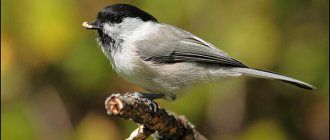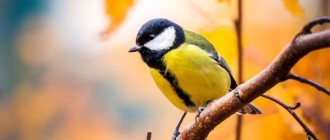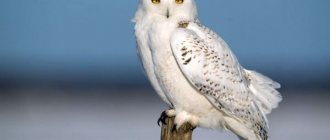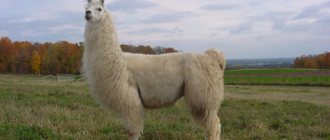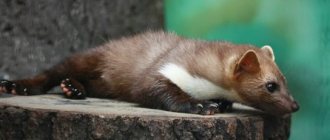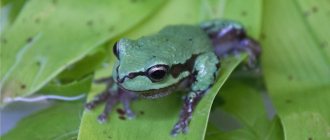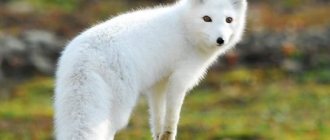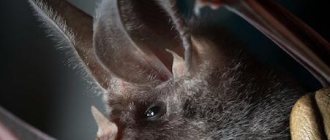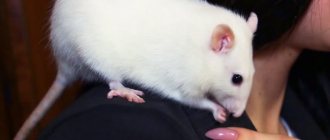- Wild animals
- >>
- Birds
The blue tit is a small, very showy-looking bird that is a type of great tit. People also call her “princeling”. In size, the blue tit is slightly inferior to its relative, but in all other respects it is very similar to it. A person who does not have knowledge of ornithology will probably not distinguish these two birds from each other.
Origin of the species and description
Photo: Blue Tit
The blue tit was first described by Carl Linnaeus in the System of Nature (10th edition) in 1758. He also assigned the name Parus caeruleus to the species, according to which the bird was considered just a subspecies of the great tit. In the early 2000s, based on genetic research by American ornithologists, blue tits were classified as a separate genus.
The blue tit belongs to the order “Passeriformes” and the family “Titmouse”. This family consists of 46 species found in the forests of Europe, Asia and Africa. In appearance, the blue tit is very similar to a sparrow, but with a very bright plumage color. The body length of an adult is about 13 cm, and the weight is no more than 13 g.
Video: Blue Tit
The difference between the blue tit and its relatives, the great tit, is only in its smaller size. The blue tit has exactly the same abdomen and chest of yellow color, the top of the head, back, tail and wings are bluish-blue with a greenish tint. There are also white feathers on the cheeks, and on the head of the bird, mother nature “painted” a kind of black mask, reaching to the back of the head. The blue tit's paws are gray, with very tenacious claws.
These birds do not have any radical differences between males and females, except that the males look a little brighter, especially in the spring, during the mating season. The color of the young is also a little duller, there is no blue cap on the head, the top of the head and cheeks are brownish-grayish, and the forehead and back of the head are pale yellow. The top of the body is colored in grayer tones, with black and dark blue tints, but not too pronounced. The bottom of the body is yellowish or greenish-white.
Interesting fact: In captivity, blue tits can live up to 15 years, but in natural conditions their lifespan is much shorter - up to 5 years.
Appearance and features
Photo: What does a blue tit look like?
The most important distinguishing feature of blue tits from other birds is the bright blue tone of their plumage. The blue tit is a rather small bird with a short beak and tail, very similar to a tit, but significantly smaller in size. The color differs from other types of tits in that it is brighter blue and has a greenish tint. Another difference is that in addition to the black mask on its head, the blue tit has a dark blue stripe, similar to a collar, running around its neck.
Otherwise, everything is identical to the color of great tits - white forehead and cheeks, bright blue tail and wings, olive-green back, greenish-yellow belly, black mild beak, small bluish-gray paws. Blue tits are very active and nimble birds, they fly very quickly, wave-like, and often flap their wings. They constantly flutter from branch to branch and love to sit on the ends of thin branches, hanging upside down.
Interesting fact: The weight and structure of the blue tit's entire body helps it hang upside down not only on thin branches, but also on hanging catkins.
Blue tits love to tweet and sing, and have a very rich repertoire in this regard. Their songs are two- and three-syllable calls, long trills, somewhat reminiscent of the sound of a silver bell, and chirping. When communicating with each other, birds make short sounds similar to “cit,” repeating them several times in a row in different tones.
Now you know what a blue tit bird looks like. Let's see where she lives.
What does a bird look like?
The blue tit is very similar to the common tit, which every city resident can easily recognize. If you look closely, you will notice that the tit’s cap and wings are black with a blue tint. Blue tit feathers are colored a rich azure color. Hence the name of the bird.
Blue tits, like all passerines, are not large in size. They grow up to 12 cm in length. Weigh no more than 15 grams. The color of the bird attracts attention:
- greenish-yellow abdomen, with a dark stripe running along it;
- azure cap;
- bright blue arrows extending from a thin beak;
- white cheeks;
- azure feathers around the neck, resembling a collar;
- the tail and wings are blue-blue;
- pale green back;
- black beak;
- blue-gray legs.
Depending on the habitat, the coloring of representatives of this order of tits varies slightly. Males, as a rule, have brighter and more contrasting colors. The feathers of females and young birds are not rich in color. The young animals do not have a bright blue cap; the color of the feathers has a grayish or brown tint.
The bird's closest relative is the blue tit (sometimes called the prince), which is easily distinguished by its color: white cap, bluish-white plumage. These birds also differ in character. The latter is cautious, leads a sedentary and more secretive lifestyle, especially during breeding.
Blue tits are very active representatives of the tit family, with a cocky character. Small birds will not miss the opportunity to get into a fight with their relatives, winning a place for a nest. Warlike character traits are especially pronounced in males during the mating season.
Like all tits, blue tits are very curious, but cautious, afraid to let people get close, but are easily tamed by food. These are songbirds. Their distinctive feature is a very rich repertoire. A ringing voice, like a bell.
Where does the blue tit live?
Photo: Blue Tit in Russia
In Europe, the blue tit lives in almost all countries except Iceland, Scotland (north), the Alps (high mountain regions), the Balkans, northern regions of Russia and the Scandinavian Peninsula.
In Norway, the blue tit can be found in the north up to the 67th parallel, in Finland and Sweden - up to the 65th parallel, on the western borders of Russia - up to the 62nd parallel, in Bashkiria - up to the 58th parallel. In the east, the blue tit lives in the forest-steppe zone of Southern Siberia, almost reaching the Irtysh River. In the south it can be found in the Canary Islands, northwest Africa, northern Syria, Iraq and Sudan.
The ideal habitat of the blue tit is an old oak forest, but having very successfully chosen a fairly vast area with different landscapes, the bird managed to adapt to a wide variety of conditions, the common feature of which is the obligatory presence of deciduous trees.
In Europe, blue tits prefer to live in deciduous or mixed forests, with a predominance of birch and oak. Moreover, they can be found both on the edges and in the depths of the forest, as well as parks, gardens, plantings, forest belts and even wastelands. Blue tits also do well in cities, forming large populations without shying away from people at all.
In northern Africa, the blue tit is found in foothill broad-leaved oak forests, cedar forests in Morocco and Libya, and in the oases of the Sahara. On the Canary Islands, the bird can be found in low-growing thickets of date palms and comb.
Nutrition
Being primarily insectivorous, that the blue tit lives in old forests. In the bark of centuries-old trees you can find quite a lot of larvae of various insects. In addition, blue tits love to feast on caterpillars, aphids, flies, mosquitoes, and in the absence of these they switch to arachnids. Blue tits are frequent visitors to orchards, where they destroy a huge number of pests.
With the arrival of cold weather, catching insects becomes much more difficult, and blue tits have to fly over large areas in search of food. Then their diet includes seeds of birch, maple, pine, spruce and other trees.
In reed and reed thickets, they pluck out plant stems in the hope of finding small arthropods and their larvae hidden for the winter. During the warm period, blue tits switch almost completely (80%) to animal food.
What does a blue tit eat?
Photo: Blue Tit
The diet of the blue tit is very varied, like that of any other bird. Moreover, approximately 80% of all food consists of insects, their larvae and eggs, and the remaining 20% is various berries and fruits. In the summer, blue tits feed on various insects, which are found in large quantities on the leaves and branches of bushes and trees.
Interesting fact: In the UK, blue tits have taken to pecking cream directly from milk bottles covered with foil caps. Because of this, the very old English tradition of milkmen leaving milk under the doors of regular customers' houses finally disappeared.
Summer blue tit menu:
- moths;
- spiders;
- aphids;
- fruit-bearing caterpillars;
- worms;
- weevils;
- flies;
- dragonflies;
- mosquitoes
While feeding the offspring, the number of insects eaten increases tenfold. By eating many pests, the bird brings considerable benefits by helping gardeners preserve the harvest of fruit trees.
Interesting fact: Tits do not catch insects in the air, but search for them only on branches, trunk and leaves, while they very rarely descend to the ground.
Autumn blue tit menu:
- black elderberries;
- viburnum berries;
- dog-rose fruit;
- cedar and beech nuts;
- sunflower seeds;
- poppy seeds:
- hazel fruits.
The winter menu of tits is practically no different from the autumn one, but since food becomes less and less closer to spring, in winter the birds diligently look for insects that hibernate in tree bark. In cities and other populated areas, blue tits have a more varied menu in winter, due to the presence of landfills and open garbage containers, where there is always something to eat, and also due to the fact that the birds are fed by people.
Interesting fact
The voice of the blue tit is somewhat softer and more melodic than that of the common blue tit. It seems to match her softer, calm disposition. The prince, like other tits, has a lot of different signals. It has a well-developed whistle signaling system, so characteristic of tits, designed for communication in pairs and flocks, as well as for protection from birds of prey. This bird also has quiet, soft and short “contact” whistles, with which the birds call to each other in every way at short distances. There is a high, long and clear "hawk" signal. There are also cries of discontent, fear, fear, and aggressive warbling.
There are many alarm signals of a very different nature and purpose, which birds use to call a lagging or lost partner. Like the common blue tit, the princeling has several types of songs. There are also whistling mating songs, and there is also a trill song. There are a lot of special shouts, shout-songs and call-songs. Princelings in different parts of their range may have different songs, calls, and calls.
Features of character and lifestyle
Photo: Blue tit in the forest
In the southern and central parts of their habitats, blue tits lead a predominantly sedentary lifestyle, and in the northern regions they migrate to the west or south during winter. Seasonal migrations of these birds are irregular and depend mainly on the weather and the availability of food. Young birds migrate more readily than older ones.
During the mating season, blue tits usually stay in pairs, sometimes forming flocks with other species of tits, pikas and kinglets. In spring and summer, pairs fly to forests with older trees, where they can find a suitable hollow and build a nest in it. Pairs feed the chicks together, release them from the nest, and then separate until the next season.
As already mentioned, tits prefer to live in deciduous and mixed forests and almost never appear in coniferous forests, since there is much less food for them there. In autumn and winter, birds migrate from place to place, and they can be found both in old or young forests, and in the undergrowth. In the autumn-winter period, especially in severe frosts, blue tits unite in large common flocks with other subspecies of tits, and together the birds wander from place to place in search of suitable food. Such association into mixed flocks is quite reasonable from the point of view of survival in extreme cold and safety.
Interesting fact: In winter, when there is little food in nature, blue tits literally raid feeders hung here and there by compassionate bird lovers. For example, in just one day, at least 200 tits can fly to a feeder hanging in the garden.
General description of the species
The male and female are colored the same. The upperparts are bluish-gray, the underparts are white, the wings and tail are bright blue. The head is almost entirely white. A contrasting black stripe runs from the base of the beak through the eye to the back of the head. At the back of the head, this stripe becomes wider, acquires a bluish tint and then, bending, descends along the “cheek” to the base of the neck. The neck is white. A dark longitudinal stripe is developed in the center of the chest and belly - a contrasting “tie”, which is sometimes completely covered by white belly feathers.
A wide white stripe, formed by the white ends of the large flight coverts, is clearly visible across the blue wing. The white tips of the tertiary flight feathers merge into a wide white stripe at the base of the wing. The ends of the primary and secondary flight feathers are also white. The amount of white on the tail feathers gradually decreases from the outer tail feathers to the central pair, with the outermost tail feathers appearing entirely white and the central ones appearing bluish-blue with white tips. The eye is black, the beak and paws are bluish-gray.
Young birds are duller in color, a grayish tint is noticeable in the color of the top, the underparts are often with a yellowish coating, the “tie” is almost invisible. The dark stripe across the eye is not so contrasting and does not extend onto the neck. It differs from the great tit and blue tit in the general whitish-blue background of the plumage and the absence of yellow and green tones in the color. Very rarely in nature you can observe hybrids of the princeling and blue tit, the so-called pleskii form.
Body length 13–14 cm, weight 10.6–15 g, wingspan 19–21 cm. Unlike the blue tit, the tail is relatively long, slightly stepped.
Habitat
The range of the blue tit includes a narrow strip of central Eurasia from Belarus east to the coast of the Sea of Japan. It covers the southern part of the forest zone, forest-steppe and partly steppe areas. The blue tit is most numerous on the eastern slopes of the Urals and the south of Western Siberia; it is a rare bird in the rest of its range. European subspecies C. c. cyanus is included in the Red Books of Russia and Belarus, as well as regional Red Books. The blue tit leads a sedentary lifestyle, in winter it wanders within the nesting area, but is sometimes found in common tit flocks outside the nesting area, even in Western Europe.
In the flat part of its range, this tit inhabits floodplain deciduous and mixed forests with well-developed undergrowth, poplar groves, thickets of bushes in floodplains, tall grass and reed swamps, dense forest plantations along the edges of ditches and fields, and orchards. She prefers low and damp, often marshy areas, overgrown with willow, alder and birch, as well as thickets of reeds, sedges and nettles.
Nutrition
The blue tit is primarily an insectivorous bird, feeding on the pupae and larvae of butterflies, bugs, aphids, grasshoppers, crickets, flies, bees and wasps, ants and beetles, and spiders. In winter, it feeds on sea buckthorn berries, seeds of spruce, birch and other plants. The blue tit forages for food in the bushes, in the crown of trees, and in the grass; in winter it finds hidden reserves in cracks in the bark. Unlike other species of tits, it splits the hard stems of reeds and umbrella plants, looking for insect larvae hidden in them.
Population
In the European part of Russia the number is low, in Chuvashia it is very low. According to Volchanetsky I.B. (1914), 07/24/1923, a brood of birds that had just left the nest was observed in “Yelki” (Alatyr) by N.P. Yaltsev. This nesting report remains the only one for Chuvashia. In November 2007, noted in the village. Lesnoy (Cheboksary) in an oak forest with the presence of spruce plantings under the canopy of an oak forest.
Lifestyle
When nesting, it is associated with sparse floodplain forests that are flooded in spring - oak forests and black alder forests. During the period of autumn-winter migrations it can also be found in other types of biotopes - reed thickets on ponds, willow forests and even in parks. Often found in joint flocks with great tits and blue tits.
It lives in floodplain forests with dense undergrowth, mainly deciduous (alder, oak, birch forests), in shrub thickets in the valleys of large and small rivers, among flooded meadows. Selects low and damp areas, often very swampy, marshy, densely overgrown with reeds, sedges, and nettles. Often settles among lowland swamps overgrown with bushes. In drier areas, it prefers areas of deciduous forest, also densely overgrown with bushes.
Breeds in solitary pairs. The nest is located in a hollow, in a rotten tree trunk or stump, usually at a height of 1-3 m. Two known nests in the republic were located at a height of 1.5 and 2.5 m in the hollows of alder trees growing in water. The building materials are dry blades of grass, moss, and animal hair. When constructing a nest, it is rolled into dense felt, and the tray is lined with the soft hair of small animals.
According to a number of authors, in regions of Europe there are usually 10-11 eggs in a clutch, but sometimes less - 5-8. The shell is milky white, covered with rare small rusty-reddish, brown surface spots, as well as deep lilac-gray spots. Egg weight 1.4 g, length 15-17 mm, diameter 12 mm.
Egg laying occurs in the second half of May. There is probably one brood per year. The female incubates for 13-14 days, and the chicks are in the nest for about the same amount of time. Flight young appear around mid-June.
In autumn and winter, during migrations, they are more common, because the number of birds increases due to young and migrating individuals from the northeast.
Security status
On the territory of Moscow, the species was under special protection from 1978 to 1996, in 2001 it was listed in the Red Book of Moscow with KR 4. No special protection measures were taken after the discovery of a nesting pair of princelings. The section of the Likhoborka River valley with the nesting site of the species is intended to form a protected area of the “ecological park” category. In 2009, the leaders of the Birds of Moscow and Moscow Region Program submitted a proposal to the Moscow Government to accelerate the creation of this protected area.
Social structure and reproduction
Photo: Blue tit bird
Male blue tits attract the attention of females by demonstrating their flying abilities and singing. They unexpectedly and very quickly fly up, then fall sharply down, perform squat dances, and swagger. The established pair then sings long and melodiously.
For a nest, pairs of blue tits choose hollows or voids in old trees located high from the ground. Both males and females take part in the construction of the nest. If the hollow is too crowded, blue tits can expand it with their beaks. In populated areas, tits have learned to build their nests in lampposts, in cracks in brickwork, and in road signs.
Interesting fact: For nesting, blue tits usually choose hollows with a hole diameter of no more than 3.5 cm.
Nest construction begins in April and depending on the weather, can last up to two weeks. The nest usually looks like a small bowl, the bottom of which is covered with grass, moss, down and wool. Bird nest litter is collected throughout the area.
Interesting fact: It happens that blue tits, in search of materials for building a nest, fly into open windows of houses and tear off pieces of wallpaper or pick out window putty with their beaks.
Adult blue tits usually lay two clutches in one season, while young birds lay eggs only once. The first clutch falls at the beginning of May, the second at the end of June. The number of eggs in a clutch can be different, depending on the age of the females and varies from 5 to 12 eggs. The eggs of blue tits are white with brown speckles. The female usually does the incubation, and the male does the feeding. Occasionally, the female may leave the nest for a short time. The incubation period usually lasts 16 days.
Newly hatched chicks are helpless and very voracious. The female sits in the nest, keeping them warm, and the male feeds the whole family. If suddenly an unexpected guest approaches the nest, blue tits zealously defend their home, making sounds like a snake hiss or a wasp buzzing. After a week, when the chicks are a little stronger, the female also begins to feed them. After 21 days, the chicks are ready to leave the nest and fend for themselves.
Reproduction
Blue tits begin to look for a mate after the first year of life. It is at this time that birds reach puberty.
During mating games, males burst into sonorous singing and dance in front of the female, fluffing out their feathers and tail. The one with whom the female begins to sing in pairs becomes the chosen one. He zealously guards the nest and his mate, sometimes driving away competitors with a fight.
The nest is always built by the female . Usually, for these purposes, blue tits choose a small hollow at a sufficient height from the ground. If the hole in the tree trunk is too small, the female will pluck out the bark with her beak. As soon as the hollow acquires a suitable size, the bird begins to fill it with twigs, feathers, pieces of moss, and blades of grass.
If the nest of an ordinary blue tit can often be found in a forest or grove, then the nests of the prince (white blue tit) are almost impossible to detect.
| They are so well camouflaged in thickets of reeds or willows that even an experienced ornithologist would consider it lucky to encounter a bird during the nesting period. |
After the nest is equipped, the female incubates the eggs (from 5 to 12 in one clutch). This period lasts approximately two weeks. The male is responsible for guarding and obtaining food. At this time it is very interesting to observe his behavior. Sensing danger, it can imitate the buzzing of a wasp or the hissing of a snake, scaring away predators.
The couple hatches chicks twice a season - in May and at the end of June. At first only the male is involved in feeding, and after a week the female also takes part in the process. The chicks grow up quickly. After just 3 weeks, they can fly out of the nest on their own and take care of themselves. It is noteworthy that blue tits are distinguished by their loyalty to each other. Established pairs breed offspring for several mating seasons in a row. And sometimes all my life, almost 12 years.
Natural enemies of blue tits
Photo: What does a blue tit look like?
Natural enemies of the blue tit can be both large birds of prey: owls, hawks, and smaller ones: starlings, jays. If the former catch the tits themselves, then the latter destroy their nests, feasting on the chicks or eggs.
Also, small representatives of the mustelidae family: weasels, can climb into the hollow of blue tits. Larger members of the family, due to their size, cannot climb into a hollow, but they love to hunt for chicks that have just left the nest and have not yet learned to fly well. Blue tit nests are also destroyed by large rodents and squirrels, but only in cases where the hole in the hollow is wide enough.
Bad weather can also be considered the enemy of tits. For example, if during the feeding of the offspring (May, July) it rains constantly and the average daily temperature remains very low for a long time, then it is difficult to find caterpillars as the main food for the chicks, since they simply do not hatch from the eggs, waiting for warmth. A lack of live food can subsequently threaten the death of the entire brood.
Also, parasites - fleas - are often found in bird nests. After the chicks leave the nest, adult blue tits can become heavily infested with them. There are so many fleas that this circumstance is a serious obstacle to creating a second clutch.

